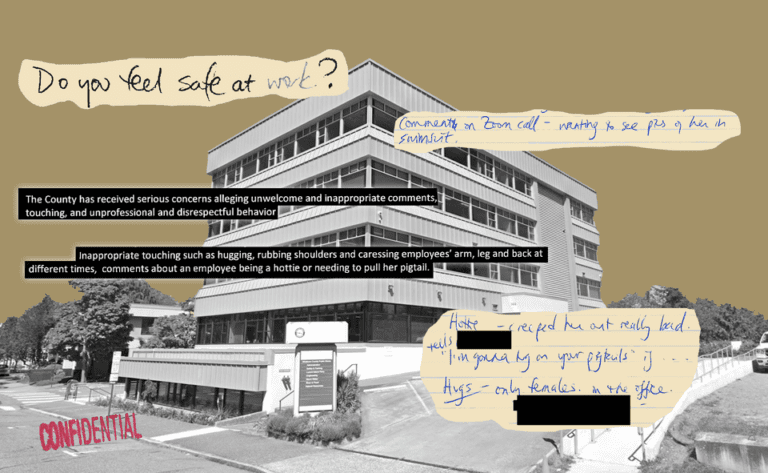An expected $16 million budget shortfall will result in larger class sizes and reductions in some offerings for students during the 2023-24 school year, Bellingham Public Schools announced on April 21, following months of trepidation over the district’s budget.
The outcome, Superintendent Greg Baker said, will be a reduction of approximately 80 certificated staff — certain to lead to reductions in various services.
In the district’s 14 elementary schools, fourth- and fifth-grade class sizes will increase and some grades might be blended into one class to neutralize uneven class sizes, a tactic that has been regularly used in education for decades.
Class sizes also will increase in middle schools and high schools. Baker said the district doesn’t know exactly by how much, but the schools are looking to condense classes and offerings to run more efficiently while operating with fewer full-time equivalent (FTE) employees.
Many decisions on how the cuts will be implemented will be made by individual schools, the district said.
School finance by the numbers
In the 2022-23 school year, the district budgeted $213,315,141 in revenue from local, state and federal funding and $219,508,900 in general fund expenditures for its 22 schools.
For the 2023-24 school year, with federal funds provided through the COVID-19 pandemic running dry, alongside a dip in a state regionalization factor, the district is slated to receive less funding while facing inflation and state-mandated raises for staff.
The school district said in its online FAQ it expects to cut approximately $5.1 million in expenditures at the elementary school level, $4.2 million in middle and high schools and $2.6 million from the district office and in central services. The additional $4 million will be absorbed by increasing fees and reallocating revenue.
In the 2022-23 school year, the district recorded 10,962 students enrolled with 838 certificated staff (teachers, nurses and counselors), 501 classified staff and 57 administrators. Next year, the district anticipates approximately 10,800 students.
In the 2016-17 school year, the district had a similar count, with 10,798 students. Certificated staff accounted for 725, classified 411 and administrators 56 of the total 1,192 FTE employees — 204 less than employed by the district today.
“This enhanced staffing has done really great things… this isn’t the time to pull it back.” – Superintendent Greg Baker
School districts receive funding from the state for each student. In the 2021-22 school year, Bellingham received approximately $12,500 per student with additional local and federal funding, according to the Washington Office of the Superintendent of Public Instruction (OSPI). Fewer students mean less funding.
Additionally, the state set the Implicit Price Deflator, a driver of cost-of-living adjustments, at 4.5%, according to the Office of Financial Management, requiring school districts to increase pay for staff and pay for it out of their own funds, Baker said.
On top of all the other hits to the budget, Baker said the regionalization factor has dropped from 12% in 2019-20 to 6% by 2024-25. The factor is determined by a state formula, which looks at home prices and other cost-of-living factors of a region and provides school districts with up to 18% additional funding, according to OSPI. The local drop accounts for approximately $3.8 million over the next two years.
Staff impacts
The result of less students, more staff, higher salaries and less funding will be about 80 fewer certificated positions. A third of the reductions likely will come through attrition — meaning employees have retired or voluntarily resigned — Baker said, and the rest will be provisional staff. Provisional staff are employees who’ve worked for the district for three years or less and who are subject to nonrenewal of contracts by the district. Baker said they may not have to reduce anyone with a continuing contract — an employee who has worked longer than three years for the district.
Essentially, the district is sitting with a surplus of staff employed during the COVID-19 pandemic and no surplus of students. With the loss of federal funding and other combined issues, it does not have the funding to maintain the staff, as much as it would like to, Baker said.
“This enhanced staffing has done really great things,” Baker said. “I’d advocate in the Legislature, we’ve learned how to increase some support and this isn’t the time to pull it back.”
Baker said that through the pandemic, the district refrained from laying off teachers despite a significant dip in enrollment to reduce class sizes, and invested in other support areas, like hiring three mental health specialists.
Additionally, Baker, noted, the state puts requirements on the district that are expensive and does not fund them. For example, the state requires Bellingham to have six school nurses, but only funds 4.5. The district employs eight, with the help of a levy.
“The state’s model is just not what people expect in their community,” Baker said. “We’re set up for this tension, in my opinion, because the model is not right.”
Baker said the district will look for grant funding and other areas of financial support to retain staff. Specifically, the district has secured a grant from North Sound Behavioral Health for $300,000 over two years to fund two out of three of the mental health specialist positions.
The district, like many around the state, is also looking at ways to reappropriate funds from a 2020 technology levy. The levy allows the district to use those funds toward staffing for positions that heavily use technology.
“The ability to help train staff to use that technology and help compensate for that time can be used out of your tax levy,” Baker said. “We’re able to use some of the tech levy to help fund stipends and some of our staff in the school.”
Baker said all districts in Whatcom County will be running enrichment and technology levies in February 2024.
Staff will be notified if their contracts are not being renewed by May 15.
Classroom and program impacts to be determined
A simple result of less staff is bigger class sizes and fewer options.
Each school will have less FTE staff to operate their classes and programs. One FTE is equivalent to one full-time staff member or multiple part-time staff, depending on the amount of hours they work.
Baker said the district is leaving it up to individual schools to figure out how to best operate with fewer staff.
Kindergarten through third grade are required by the state to maintain the 1-teacher-to-17-student ratio across the entire grade. Teachers include classroom teachers and specialty positions, such as physical education.
Baker said the goal is to not severely impact any specific programs. Specifically, students and community members have voiced their fears about cuts to the visual performing arts like band, orchestra, choir and drama.
“Could there be a fewer number of a class here and there that are in the realm of visual performing arts? That could be,” he said. “We haven’t cut band and choir; we haven’t cut at large scale. There could be refinements, just like every year.”
In middle schools, Baker said a lot of trepidation surrounds the choir program.
“We haven’t cut choir, per se, but as principals have their FTE and think about electives — P.E., music, plant science, all these different creative [classes] — they’re figuring out where we can scale back,” Baker said. “Part of that is, what do kids want to take and part of it is what can my staff teach?”
One possibility, he said, is that the elective programs for choir at two of the middle schools might be pushed to before school or after school, like at the other two middle schools. The school district also said the staffing of the art program will be reduced from 3 FTE to 2 FTE staff — as many programs will experience — for the four middle schools.
The district said significant cuts in athletic programs are unlikely. Some teams might not be able to travel like they used to, or raise their own funds for additional experiences.
Administrators at secondary schools haven’t made final decisions on courses and impacts to programs for next year. The district is receiving feedback from students and the community as they make budget refinements based on their allotted funding.
The final budget will be announced in August before the start of the school year.




